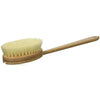Take Your Workout Outdoors

Staying in shape is one of our best insurance policies against illness. All too often, however, gym memberships are the first thing sacrificed when money is tight.
Others (like me) just hate the idea of a gym. All those machines remind me of hamster wheels, the air is stuffy and warm, and germs lurk about. But there are free alternatives to gyms that will get you in shape, and expose you to fresh air, sunshine, and the beauty of nature.
Starting and maintaining a garden is fantastic exercise in your own backyard. Clearing brush is amazingly hard work. If you want to sweat, that’s your ticket, and you’ll be protecting your home from wildfires, too. Wear long sleeves and pants, gloves, a hat, and safety glasses.
If you prefer your exercise to be a bit more civilized, try walking laps around your block. Walking at a slower pace, you’ll notice things you’d never seen before just driving by. You might meet your neighbors, too. Challenge: Take your walks with minimal glances at your cell phone. It’s safer and better for your posture.
Stair-running is also free, and more fun with a partner. Stadiums, arenas, colleges, office buildings, and civic centers are great places to find stairs for your workout. Run or walk up, but always walk down, to prevent shin splints.
Running or walking on the beach provides a challenge for your legs, hips, and core. For the best workout, avoid the wet sand. Having to constantly adjust for dry sand’s soft, shifting nature makes you work harder. Beaches also have the benefit of clean, negative-ion rich sea air. Bring the kids and dogs along, too, and make it a play day. Throw balls, swim in the waves, dig holes, and make castles. Doesn’t that sound more fun than a dingy gym?
In high school and college, I was on the varsity track and field team. Daily workouts were killer. We were assigned a list of tasks to accomplish before we could leave. So many laps around the track, so many trips up the bleacher stairs, so many wind sprints, etc. At the bottom of every list were a number of “snake pits.” The so-called snake pit was a half-mile-long, steep, windy, access road that led from the side of the field down to the bottom of the campus property. Again, we had to run up, but always walk down. It’s a fantastic way to get an aerobic workout within a relatively small area, with minimal joint impact. And snake pits will kick your rear - I guarantee it! Start out with two or three, and try to add one more every week.
If you live in an area where you get snow, you have an unlimited supply of workout material. Just go out walking in unplowed snow. Even a few inches will make a huge difference. Make snowmen and snow angels with your kids, and if you don’t kids do it anyway! You’ll be panting in no time, and having a blast as well. Shoveling snow and digging out cars is a terrific workout. I find myself peeling off layers of clothing until I’m down to a t-shirt and long underwear.
Finally, get thee to the mountains. If you live within an hour or so drive to your local mountains, you have an amazing training resource available free of charge. There are many reasons why athletes practice high-altitude training. At higher altitudes, air is thinner, and it holds significantly less nitrogen and oxygen than an equal volume of air at sea level. The body has to work harder to exist at high altitudes. To combat low blood oxygen saturation, for instance, the body produces more red blood cells. The muscles make more efficient use of oxygen, and skeletal muscle is improved on the mitochondrial level. All of this creates a competitive edge for athletes who live at higher altitudes. Once at sea level, the effect only lasts for 15 days or so, but that’s plenty of time for an athlete to travel for competition and return.
Of course, most of us are not high-level athletes. But the mountains are the perfect place to go for a healthy, natural, fun workout. Take the kids (dogs are not allowed in many parks, so check first before bringing Rover along). Some parks allow dirt biking on designated trails. Wear sun protection, as the sun’s rays are 10% stronger for every 1,000 feet of altitude. Practice common sense: keep your eyes on the ground, respect wildlife, and pack out all your trash. Explore a little ways off trail (if it’s safe to do so); the added challenge of climbing over uneven terrain and rocks and ducking under branches will push your body more than just hiking a manicured path.
Don’t forget tree-climbing. It’s physically challenging, works many different muscles and joints, and makes you think about what you’re doing, unlike mindlessly running on a treadmill. The point is to have so much fun, you won’t even notice that you’re exercising. You’ll just have a monster appetite when you get home!

December 18, 2025
The Medical Benefits of the Herb Lepidium latifolium: An Exploration of Mechanistic and Human Studies
Introduction Lepidium latifolium, commonly known as broadleaved pepperweed or perennial peppergrass, is a perennial herb belonging to the Brassicaceae family. Native to regions such as Europe, Asia, and North America, it has become natu...
Read more
December 18, 2025
Top Detoxification Supplements Commonly Recommended for Supporting Detoxification of Chemicals/Solvents
The Hidden Threat: Environmental Toxic Solvents and How to Support Your Body's Natural Detox In our modern world, we're constantly exposed to invisible chemicals known as volatile organic compounds (VOCs) or toxic solvents. These includ...
Read more
December 18, 2025
GMOs: "Unraveling the DNA Myth" by Barry Commoner
Barry Commoner challenges the foundational theory underlying genetic engineering - Francis Crick's "central dogma" - arguing that recent scientific evidence has undermined its validity and exposed the unpredictable dangers of genetically...
Read more




Leave a comment